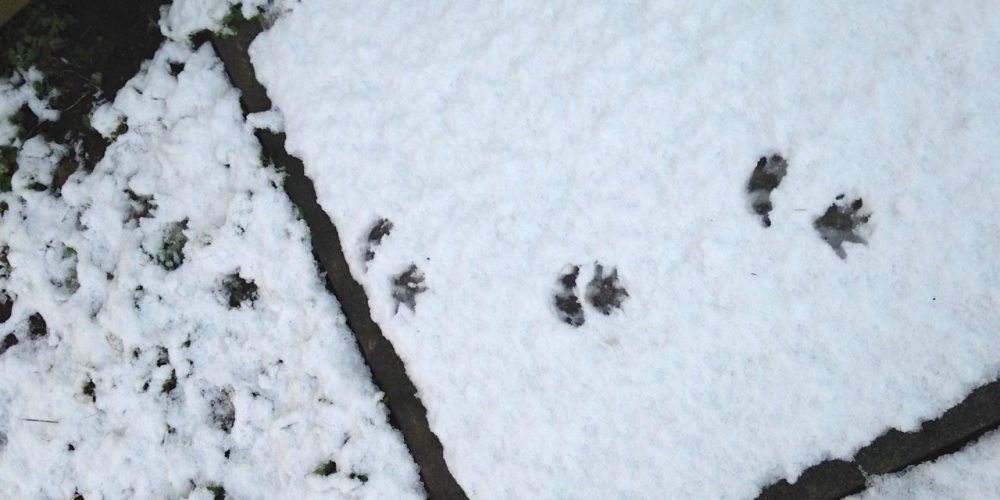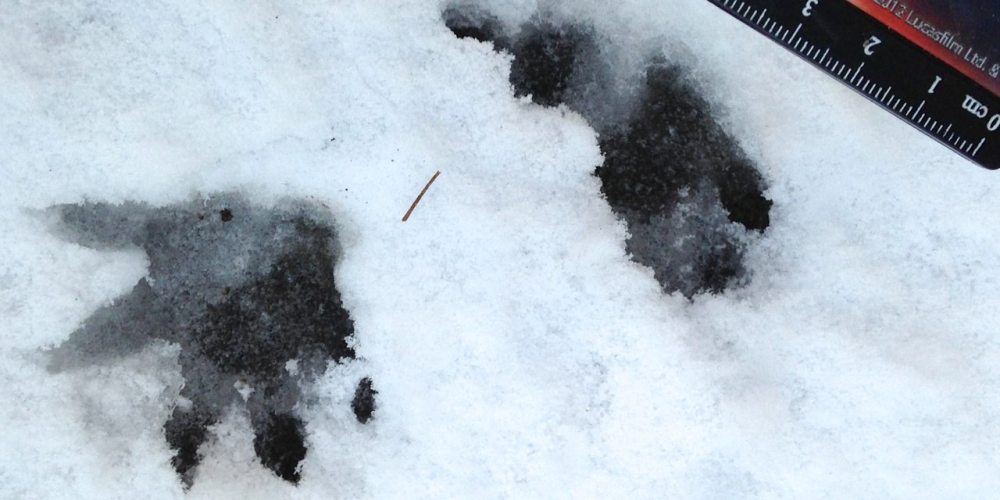
Animal tracks in snow can be urgently interesting to kids, and figuring them out is a natural opportunity to learn more about local wildlife: very local, as in your yard. Even last week’s pathetic dusting in Nashville—where it hardly ever snows for real—was enough to solve my own backyard mystery. We’d been curious about what had shacked up under the shed. Something had worn a comfortable hole beneath the joists, and because stray cats, foxes, coyote, possum and the occasional raccoon prowl our tiny, suburban yard, the ID was up for grabs. But, tracks in the sudden snow left no doubt: it was officially opossum. Possum prints are particularly peculiar, as is the whole animal, really. There is no mistaking those weirdly elongated back feet behind tiny, hand-like paws. (The scat is unique, too, but we’ll save descriptions for another post.)
My boy and I took photos, measured the length and width of each print with our Star Wars ruler, and checked a mammal field guide for confirmation. We also noted the route our shed-dweller took: where it snugged up against a neighbor’s woodpile, plodded across the driveway, and hunkered under the tiny gap under our other neighbor’s spite fence.

So what? So cool. Possums are native marsupials, feign death as a defense mechanism (in a catatonic state that can last for hours), have a bizarre reproductive system, are resistant to rabies, immune to many venomous snakes, and can hang—albeit briefly—by a prehensile tail. But the overall cool thing is that we just like knowing what lives around us, with us. We feel like we live a bit deeper and wider when we learn something about where we are: a name, a behavior, a connection between species.
What if our mystery beast had turned out to be less than wild? Say, a neighbor’s cat or dog? Still cool, because we learn a basis for comparison, and besides, we’ve still asked the same key questions about track size, whether the claws are in or out, how the pads are shaped and spaced, if there is fur or webbing between the toes, and so forth.
Curiosity is a requirement for all this, but snow isn’t. Sand is dandy, as is loose soil and mud, and you can construct a half-assed yet effective track station just by throwing some gypsum powder through a colander. More systematic approaches will appeal to the systemic imagination: just search online with terms like track plot, scent station and track plate. And if you are that interested, it’s only a matter of time before you hanker for a game cam: a night-vision, motion-detecting camera for wildlife (or vandals).
Resources:
Nonfiction picture books are marvelous accompaniments to this sort of detective work. The decent ones go beyond ID to habitat and behavior, as does Whose Tracks Are These? by James Nail, illustrated by Hyla Skudder. The National Wildlife Federation has a good animal signs site for kids in grades K-4: Tricky Tracks. Grown-up tracking guides are useful for all ages, and take into account far more clues than just hoof and paw prints: stuff like broken and gnawed twigs, rubs, scrapes and scat.



